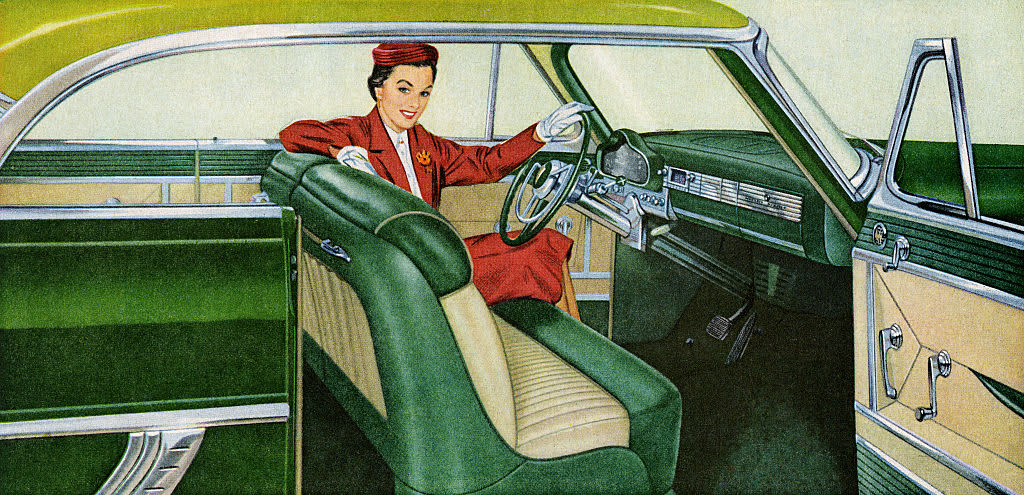
The words “classic American car” might conjure memories of massive sedans, flourishes like tailfins, big engines and in many cases bench seats.
The front bench seat was once a standard feature of American cars, but over time it disappeared, in part due to changing tastes and safety regulations. Its disappearance actually says a lot about automotive history.
It is possible bench seats could come back, thanks in part to cars that are either electric or autonomous cars.
At one point in American automotive history, just about all cars had bench seats — they inherited the feature from horse-drawn carriages. Bench seats were perfect for squeezing several passengers in a car, and were great for watching the drive-in movies that became popular in post-War America.
However, American automakers soon found themselves scrambling to meet demand for smaller sportier cars with bucket seats that could compete with the European cars American soldiers had seen during World War II.
The Chevrolet Corvette and Ford Mustang were two of these legendary American answers to European cars.
A push toward safer vehicles in the 1970’s also hurt the case for the bench seat. Automakers wanted to be able to install automatic seatbelts and airbags in cars and had a hard time making them for the center seat on the bench.
Over time, carmakers crammed more stuff into the center console of the car between the two bucket seats — everything from music players to climate controls and gear shifters. Consumers grew accustomed to the amenities.
Today there are few vehicles that have bench seats in the front, and they are almost entirely trucks and full size SUVs.
Changes in technology are reopening the door to bench seats, and they have been spotted on some electric and autonomous concept designs. Some autonomous vehicle designs even suggest seating passengers around a table in the center of the car.
Should that happen, millions of Americans might once find it possible to cuddle up in a car and watch a movie — just as so many did in the 1950s.




